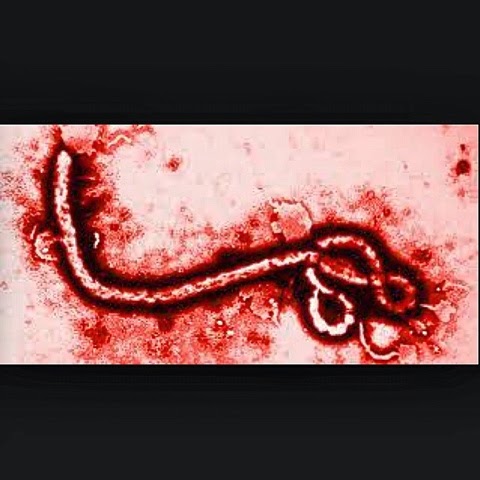Ebola Virus Disease is a rare and potentially life threatening disease that is originally caused by an infection. The Ebola Virus can cause disease in humans as well as non-human primates including but not limited to Gorillas, Chimpanzees, Orangutans, and Bonobos. There are five strains of the Ebola virus, but only four have ever affected humans.
The Ebola viruses are most commonly found in Northwestern Africa. In 1976 near the Ebola River the virus was initially found, hence the name. In order for an outbreak to start in the human population a "spillover" event must first occur, which involves a human making contact with an infected animal, either a primate or the natural host reservoir, which is unknown at the present time but highly suspected to be bats. Once one human is infected, they can then pass the virus to another human. Any broken skin or mucus membranes can be the site of transmission for the virus. The virus can be picked up from any cloth such as bedding, needles, or medical equipment like syringes.
Some common symptoms of Ebola include: fever, headache, muscle pain, weakness, fatigue, and unexplained bruising. These symptoms can present themselves anywhere from 2 to 21 days after being exposed to the virus, but appear most commonly after 8-10 days.
It is important that patients infected with the Ebola virus receive IV fluids, and are monitored for electrolyte levels as well as blood pressure. The quicker an infected patient receives treatment the better. Ebola Virus Disease has a 50% fatality rate, but changes and can be anywhere from 25% to 90% during times of extreme outbreaks. Community response is vital in limiting the outbreak.
Past Ebola outbreak locations include: the Democratic Republic of the Congo, South Sudan, Uganda, Ivory Coast, and more. 2014 saw the largest known outbreak of the Ebola Virus in west Africa crossing boarders to a handful of countries, and spreading as far as The United States.
"Ebola Virus Disease." Centers for Disease Control and Prevention. CDC, n.d. Google. Web. 25 Feb. 2015. <http://www.cdc.gov/vhf/ebola/>.
The Ebola viruses are most commonly found in Northwestern Africa. In 1976 near the Ebola River the virus was initially found, hence the name. In order for an outbreak to start in the human population a "spillover" event must first occur, which involves a human making contact with an infected animal, either a primate or the natural host reservoir, which is unknown at the present time but highly suspected to be bats. Once one human is infected, they can then pass the virus to another human. Any broken skin or mucus membranes can be the site of transmission for the virus. The virus can be picked up from any cloth such as bedding, needles, or medical equipment like syringes.
Some common symptoms of Ebola include: fever, headache, muscle pain, weakness, fatigue, and unexplained bruising. These symptoms can present themselves anywhere from 2 to 21 days after being exposed to the virus, but appear most commonly after 8-10 days.
It is important that patients infected with the Ebola virus receive IV fluids, and are monitored for electrolyte levels as well as blood pressure. The quicker an infected patient receives treatment the better. Ebola Virus Disease has a 50% fatality rate, but changes and can be anywhere from 25% to 90% during times of extreme outbreaks. Community response is vital in limiting the outbreak.
Past Ebola outbreak locations include: the Democratic Republic of the Congo, South Sudan, Uganda, Ivory Coast, and more. 2014 saw the largest known outbreak of the Ebola Virus in west Africa crossing boarders to a handful of countries, and spreading as far as The United States.
"Ebola Virus Disease." Centers for Disease Control and Prevention. CDC, n.d. Google. Web. 25 Feb. 2015. <http://www.cdc.gov/vhf/ebola/>.
"Ebola Virus Disease." World Health Organization. WHO, n.d. Google. Web. 25 Feb. 2015. <http://www.who.int/mediacentre/factsheets/fs103/en/>.



